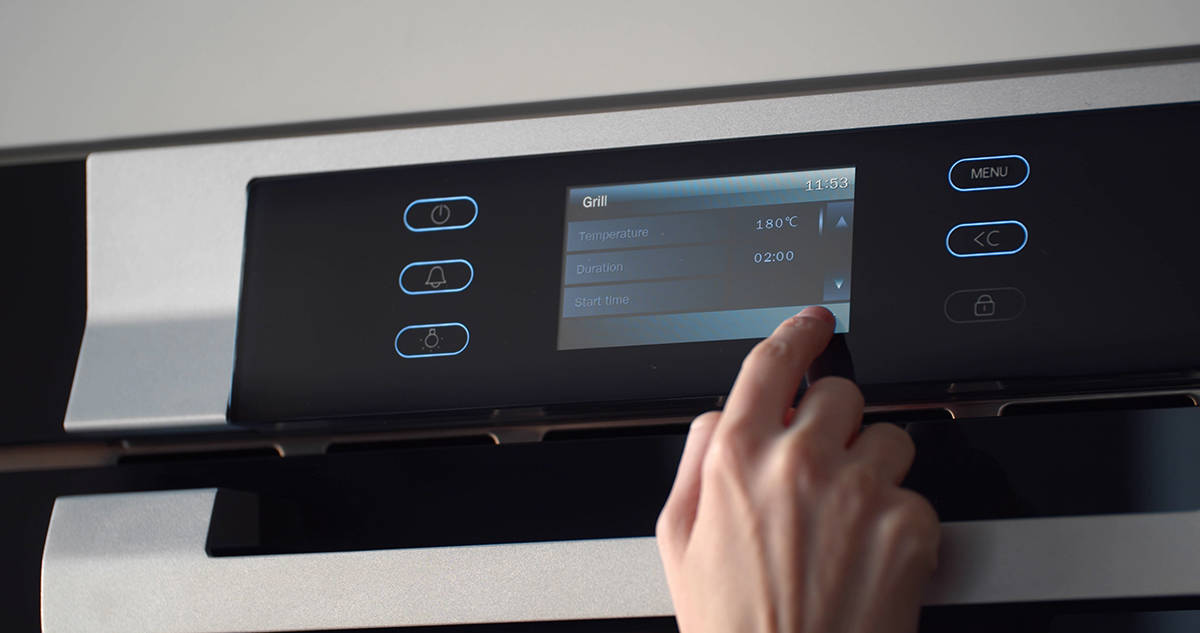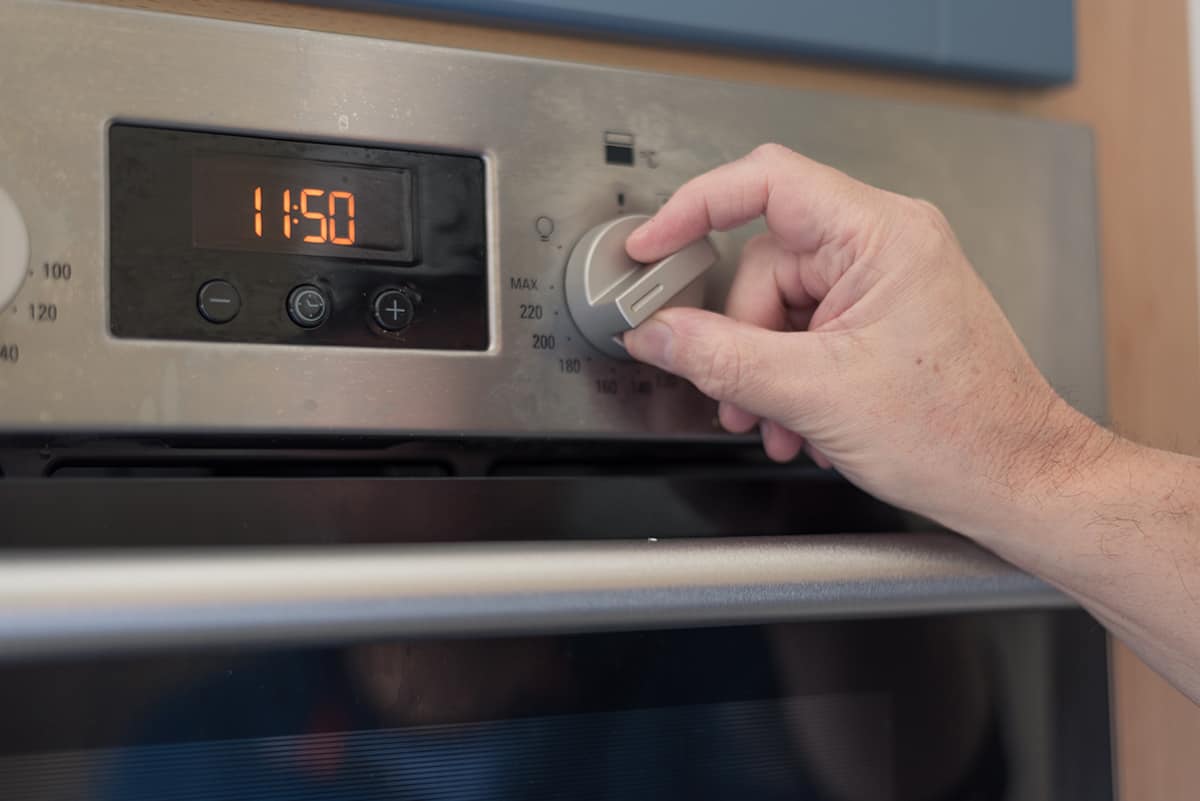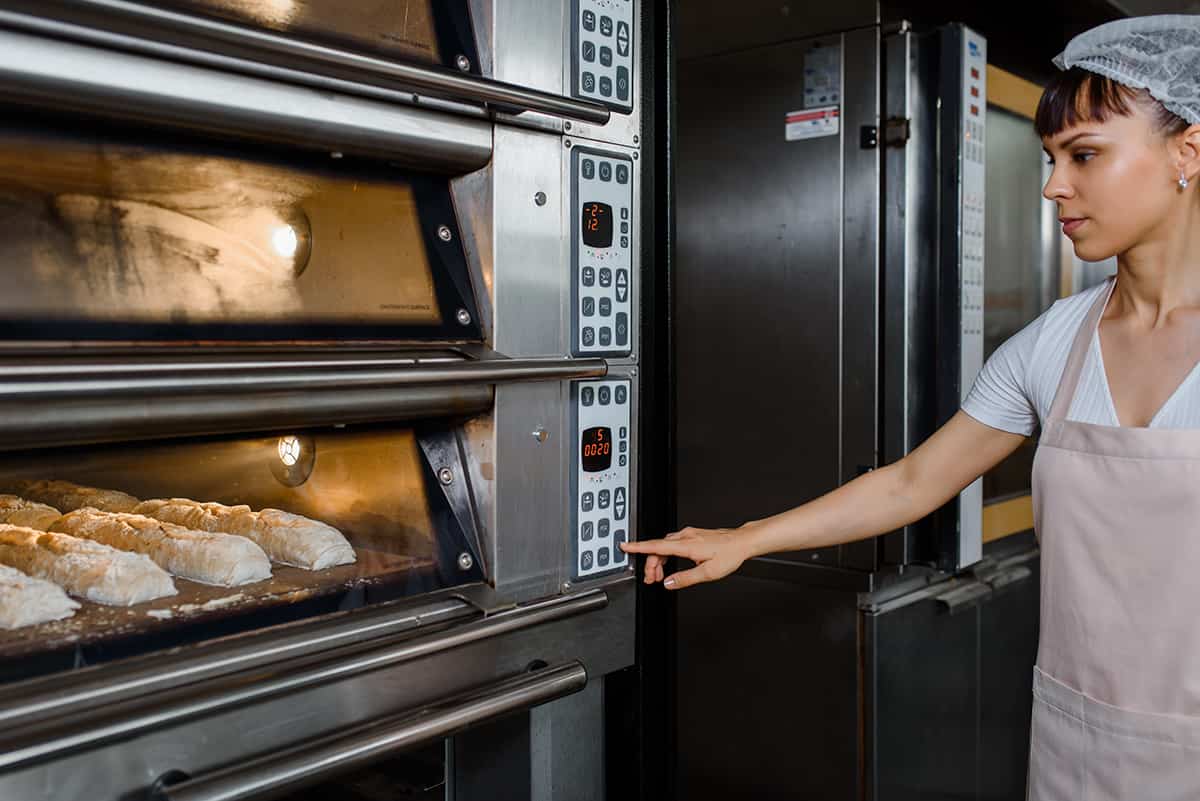There are some recipes that require baking for several hours at a time. Whenever you try a new recipe, you should do so when you have the energy to stay awake during the entire baking process. Oftentimes, people forget their ovens are on and leave them on for few hours longer than intended—sometimes overnight!
Baking something overnight can have disastrous effects. Electric ovens may melt their own control boards, while gas ovens will slowly but steadily release carbon monoxide into the air.
For the remainder of this guide, I will explain the various effects of leaving an oven on overnight, what safety mechanisms are in place inside of ovens, and what you should do if you plan on leaving your oven on all night long.
What Happens If You leave the Oven On Overnight?
Humans are forgetful creatures. We may have our entire day planned, but the simplest distraction can make us forget about everything. In many cases, this isn’t too much of an issue, but when you introduce heat into the mix, things can get pretty choppy.
So, what can happen if you leave your oven on overnight? The effects range from harmless to completely devastating and life-changing. Let’s take a look at a few things that could happen.
1. Nothing
There are probably some of you who woke up in the morning and realized that you forgot to turn your oven off. Your home is still intact, the oven is still in working order, and nothing in your kitchen has changed the tiniest bit.
Perhaps your pizza is burned to a crisp, but that’s pretty much the extent of the damage. This is the best we can hope for, but it’s not something you should expect.
2. Damaged oven
The second-best thing we can hope for is that the oven has experienced minimal damage. Perhaps the heat of the oven escaped and wafted up toward the control dials. Maybe the dials have melted, or possibly the clock and timer functions on the control board are broken.
While this isn’t ideal, at least your home hasn’t burned down to the ground. Remember that nearly 50% of all structure fires in the US are caused by cooking, so if you can walk away from your kitchen despite the oven being on all night, you should consider yourself lucky.
3. Carbon monoxide poisoning
If you found your gas range on for the entire night, hold your breath while shutting the oven off and immediately vacate your home. Gas ranges produce trace amounts of carbon monoxide when the fuel is combusted, but that tiny amount can accumulate over time. If the concentration of carbon monoxide becomes too high, there’s a real risk of suffering from long-term tissue damage and even death.
Oven Safety Mechanisms

The good news is that modern ovens are fitted with various safety measures that prevent such devastating occurrences from happening. If you have a gas range, it will come with high-tech thermocontrol. Electric ovens usually have an auto-shutoff feature. Let’s examine both of these systems.
Thermocontrol
The way a gas oven works is it continuously cycles on and off when gas is allowed entry through the burners. This repeated cycling is done to maintain a specific temperature. For example, if you preheat your oven to 350°F, it will cycle on until the internal thermostat registers a temperature of 350°F or close to it. After that, it will cycle off to keep the temperature close to 350°F as possible.
While your oven may surpass your set temperature during the on cycles, the off cycles prevent heat from continuously building up and creating a fire hazard in your kitchen. If the thermocontrol is damaged due to heat or other factors, the oven will turn off, and the safety valve will switch off to stop the flow of gas.
Auto-shutoff
Electric ovens also have the same thermocontrol feature as gas ranges. However, there’s another layer of safety to prevent ovens from burning out. That is the auto-shutoff function.
Every modern electric oven is programmed to shut off after 12 hours of continuous use. After that, you will have to manually input new commands to start the oven. This feature is extremely beneficial for those who leave their homes for a few days, but for overnight baking, the oven may still be on when you awake. Luckily, the thermocontrol feature will still maintain the selected cooking temperature.
Can You Leave an Oven On Overnight?
After reading everything in this guide so far, you’re probably still wondering to yourself: is it safe to leave an oven on overnight?
Yes, you may leave an oven on overnight. In fact, this is one of the more reasonable ways to complete baking a large slab of meat for the following day.
Tips for Leaving an Oven On Overnight
That said, you should still exercise caution when leaving your oven unattended for any amount of time. Here’s a quick checklist of things you should do to minimize cooking-related risks:
Check your smoke detector
Make sure the smoke detector’s batteries still have some juice in them.
Move all flammable objects away from your oven
Do not leave cookbooks, dried ingredients, or wooden utensils anywhere near your oven.
Cook low and slow

If you want to roast something overnight, you will most likely do so at a low temperature. It’s generally safe to bake something at 200 to 250°F for over 8 hours continuously.
Install a carbon monoxide detector
Regardless of what fuel source your oven uses, it’s a good idea to install a carbon monoxide detector in your home. If carbon monoxide levels reach a certain concentration, the detector’s alarm will go off, informing you that something has gone awry.
Set a timer
A timer will blare the music of its people when the countdown timer expires. That way, you’ll know when your food is done and safely remove it from your oven. If your oven doesn’t have a built-in timer, consider getting the OXO Good Grips Digital Timer.
Adjust the auto-shutoff timer
Many modern electric ovens allow users to modify when the auto-shutoff function kicks in. It’s set to 12 hours by default, but you can reduce the timer to as low as 6 hours.
Keep a fire extinguisher next to your bed
This might sound extreme, but it’s better to be safe than sorry. In the event a fire breaks out in your kitchen, the tool you need to douse the flames will be waiting by your side.
Consider using a slow cooker
Slow cookers are designed to cook foods for lengthy periods of time at lower cooking temperatures. If possible, use a slow cooker in place of an oven. If that’s out of the question, follow the tips listed above.
How to Put Out an Oven Fire
If you wake up to smoke or (even worse) uncontrolled flames in your oven, here’s what you need to do.
Keep the door shut—A shut oven door will prevent more oxygen from fueling the fire.
Turn the oven off—Carefully turn the oven off by turning the control dials or unplugging the appliance. Use oven mitts to keep your hands away safe from the hot oven.
When the fire goes out, open the oven door—Again, use oven mitts to keep your hands from becoming singed on the oven door handle.
Vent your kitchen—Open all windows in your kitchen to allow the smoke to escape. When the fire is out and most of the smoke is gone, you can turn on your range hood.
Remove the contents inside the oven—Use oven mitts!
Figure out the cause of the fire—Do not turn the oven back on until you’ve learned the cause of the fire, such as food soils, faulty gas line, etc.






